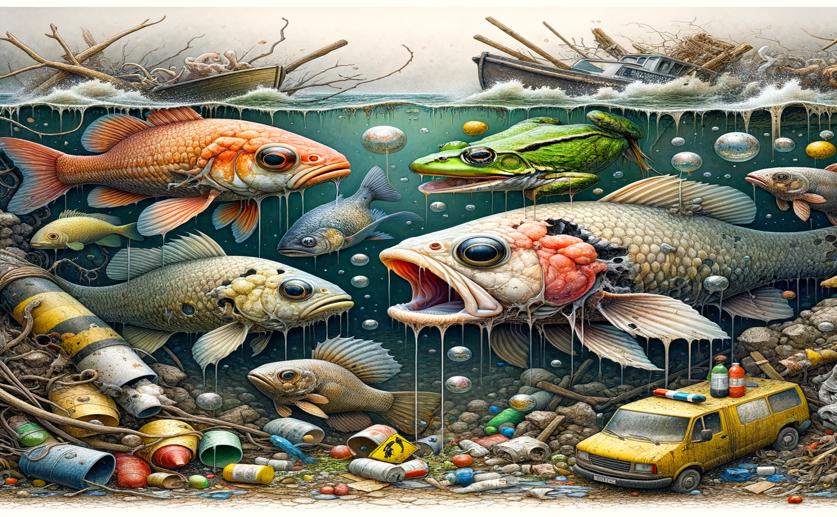
How Environmental Factors Disrupt Hormones in Fish and Frogs
Jenn Hoskins
25th March, 2024

Image Source: Natural Science News, 2024
Key Findings
- Study finds that artificial light at night (ALAN) may disrupt hormones in aquatic animals
- Current definitions of endocrine disruptors (EDs) may be too narrow, overlooking non-chemical sources
- The study suggests redefining EDs to include natural and non-traditional disruptors for better ecosystem protection
EnvironmentEcologyMarine Biology
References
Main Study
1) Endocrine disruption in teleosts and amphibians is mediated by anthropogenic and natural environmental factors: implications for risk assessment.
Published 25th March, 2024
https://doi.org/10.1098/rstb.2022.0505
Related Studies
2) Reversibility of Thyroid Hormone System-Disrupting Effects on Eye and Thyroid Follicle Development in Zebrafish (Danio rerio) Embryos.
3) Thyroid-on-a-Chip: An Organoid Platform for In Vitro Assessment of Endocrine Disruption.
4) Towards regulation of Endocrine Disrupting chemicals (EDCs) in water resources using bioassays - A guide to developing a testing strategy.



 4th March, 2024 | Jim Crocker
4th March, 2024 | Jim Crocker